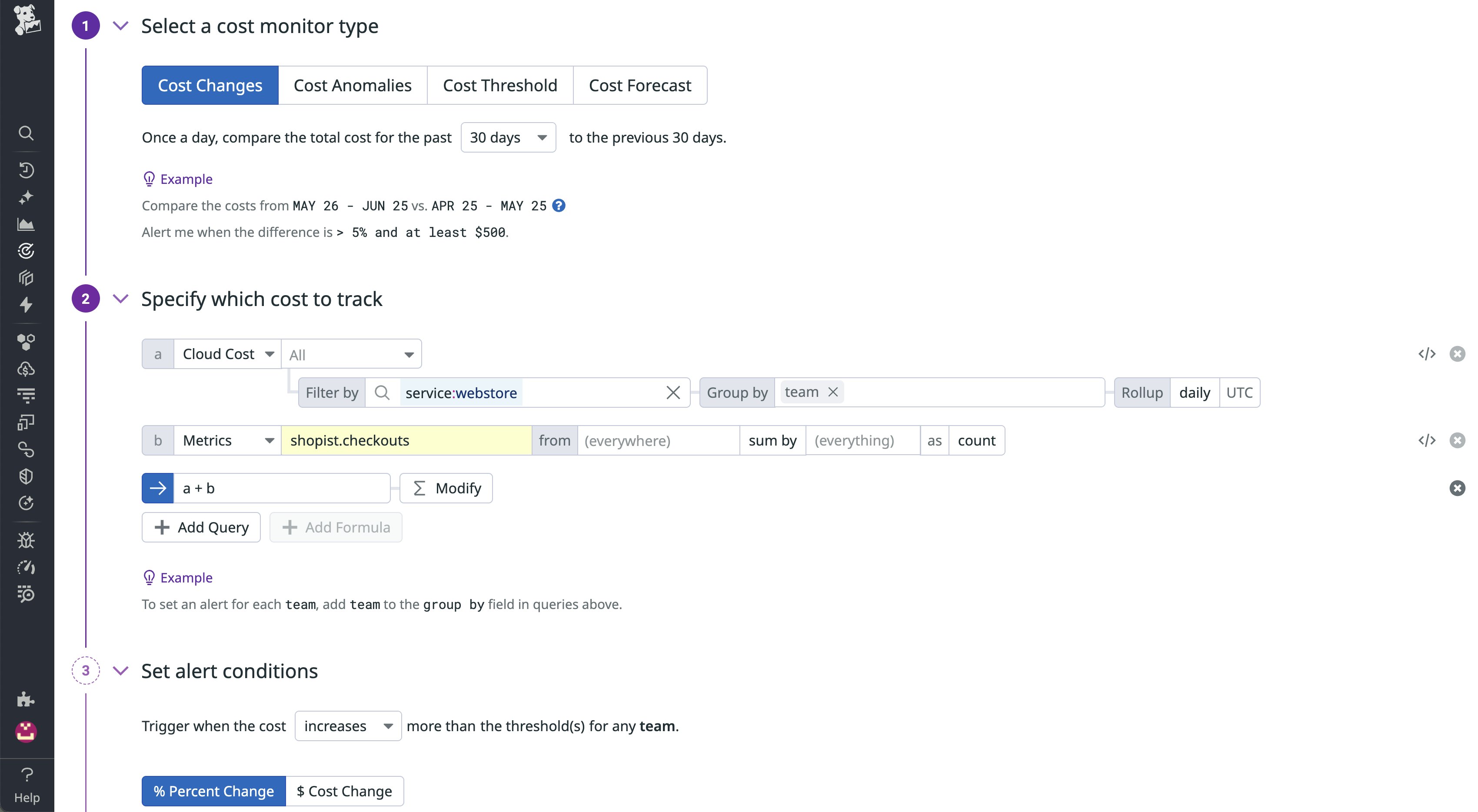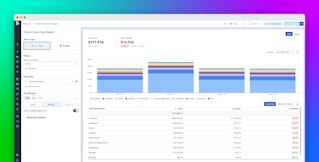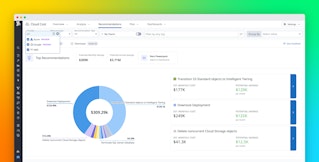
David M. Lentz
When you adopt FinOps to maximize the value of your cloud spending, you may have some simple first steps you can take to gain cost efficiency. For example, you can find and delete any unused resources to quickly realize a one-time optimization. But the ongoing work to manage cloud costs becomes complex as your organization grows, your infrastructure spans multiple clouds, and you can’t easily see the full value of your cloud spending by tracking only the bottom line.
Embracing FinOps can enable your engineering teams to own their costs and maximize the value you get from the cloud—even as your overall spend grows. At Datadog, our FinOps and engineering teams work as partners to understand and continually optimize our investments in the cloud. In this post, we’ll show you how we’ve built a successful FinOps practice based on the culture and tools we believe will enable us to achieve sustainable cost efficiency. We’ll describe how we’re cultivating trustful, collaborative relationships among key cost management stakeholders and adopting tools and processes to give engineers the data they need to own and optimize their cloud spending.
Building partnerships based on credible cost data
Our FinOps practice is built around active, goal-driven partnerships between our FinOps analysts and engineering teams. The FinOps team starts by reviewing organization-wide cloud spending to identify services with clear potential for cost optimization. Next, they engage an engineering team to target a specific optimization opportunity, such as the storage costs or data transfer charges incurred by that team’s service. At the start of the engagement, the teams also estimate the potential cost savings their efforts could realize.
To ground the collaboration in shared visibility, the FinOps team creates a custom dashboard that highlights relevant cost data. Engineers trust the cost data when it appears in Datadog alongside the performance, reliability, and security data they already rely on, instead of in a spreadsheet or external warehouse.
Engineers provide context to the cost data to inform which costs already deliver maximum value and which could be optimized. Throughout this engagement, engineering executes changes to achieve the targeted optimizations while the FinOps team monitors the success of those efforts and advises on infrastructure cost options and best practices. Both teams use Datadog dashboards and Notebooks to visualize overall costs, unit costs, and cost trends that illustrate their efficiency gains over time.
At the end of the engagement, the partners review the impact of their efforts to compare actual savings to the original estimate. If the expected savings weren’t realized, they work together to understand why—whether due to incidents, traffic growth, or other unforeseen factors. The FinOps team then shifts focus to new cost optimization opportunities. They generally avoid seeking optimizations from teams that are in the early stages of operating a service, since those teams typically need to prioritize growth and stability over cost efficiency. Instead, they approach teams with the bandwidth to refine their services in ways that increase the value of each dollar spent.
Operationalizing FinOps at Datadog
At the start of our FinOps journey, we built custom tools that enabled our FinOps team to collect cost data and share it with engineering teams. This early phase coincided with the launch of Datadog Cloud Cost Management (CCM), and we used our experience to help shape the product in a way that would meet our real-world requirements. Today, the Datadog platform is key in our FinOps processes, and we rely on CCM for ongoing cost insights.
In this section, we’ll look at the tools and processes we use to collect and analyze cost data, and to plan and implement efficiency improvements.
Using cost allocation to gain granular cost visibility
A key early step in our FinOps evolution was to attain some capacity for cost allocation so we could attribute portions of our overall costs to the services and teams that incurred them. Our FinOps team provides cost allocation in the Datadog platform to give engineering teams visibility that helps them set the direction of their cost efficiency improvements.
While we strive to attribute as much of our cloud spend as possible to specific services, this depends heavily on tagging—each cloud resource must be properly tagged to associate its cost with the appropriate service. To ensure that new infrastructure and cloud services are tagged appropriately, we use CCM’s Tag Pipelines, which also enable automated tagging based on metadata in the AWS Cost and Usage Report (CUR). And we use Scorecards to help us monitor our services to ensure that tags and other best practices are applied consistently.
In addition to showing each service’s slice of our overall cloud spend, cost allocation helps us understand costs associated with shared cloud resources, such as data stores and networking, that are used by more than one service. By proportionally allocating shared costs to the services that use them, we gain a clearer picture of each service’s true operating cost and can identify the most impactful optimization opportunities. To enable this level of visibility and precision, we use Custom Allocation Rules to distribute costs that are untagged or shared across multiple teams.

Tracking unit costs to measure efficiency
Another cornerstone of our FinOps practice is the focus on unit economics, which defines how much it costs to deliver a unit of business value, such as an API call or byte of data ingested. Unit economics fosters a shared language across technical and business stakeholders, which promotes communication, collaboration, and accountability through a common understanding of value.
Engineers can use unit costs to gain deeper context around their cloud spend and distinguish between healthy growth and inefficiencies. As they optimize their cloud resources, they track unit costs—rather than overall spend—to clearly see how these changes affect the cost-efficiency of their services. Unlike raw cloud spend, unit costs remain meaningful even as usage scales. In this way, they provide a consistent metric that reflects true cost efficiency and guides teams to make smarter decisions about where and how to optimize.
We use CCM to identify, track, and alert on changes in unit costs, ensuring that our optimization efforts aren’t aimed at spending less on cloud services but instead on maximizing the value of what we get for that spending.

Acting on insights and maintaining cost visibility
We use a combination of tools and processes to plan and implement efficiency improvements. At the center of our process is the Datadog platform, which brings actionable cost data into view alongside the metrics engineers already rely on to maintain service quality.
Cloud Cost Recommendations helps engineering and FinOps teams identify specific cost optimizations to implement. These recommendations analyze cost data from our cloud environments to identify resources that can be updated, downsized, or deleted to avoid unnecessary costs. After the engineering team accepts a recommendation, the FinOps team helps prioritize it and track its progress by linking CCM to Jira workflows. This ensures that cost-saving efforts are clearly prioritized and actively managed.
To guide decision-making and track results, we use the Cloud Cost Analytics page to quickly filter cost data by relevant dimensions, such as region or cloud service. This gives us fast, granular feedback on the cost-effectiveness of any changes, which helps guide the engagement with up-to-date information on progress toward the identified optimization. If changes introduce any regressions—for example, if we spin up inefficient resources that increase unit costs—Cost Monitors alerts us quickly to the unexpected increases.
Just as identifying and executing on optimization opportunities is important, so is maintaining visibility into improvements and ongoing costs. Notebooks provide a collaborative space for sharing context and progress throughout an engagement. Teams can pair cost data with related benchmarks—such as incident metrics or SLO performance—in a rich, interactive format that enables stakeholders to explore and communicate results clearly. For ongoing cost visibility, engineers surface CCM data in the same dashboards they use to track service health and performance. Cost widgets embed cost awareness into day-to-day operations. This ensures that cost becomes a visible and persistent dimension of service quality.

Evolving our FinOps practice
We’re still early in our FinOps journey, but we’ve already made meaningful improvements to the cost efficiency of several services. Engineers now treat cost wins like other forms of service improvement, sharing them in the same internal Slack channel where they highlight gains in speed, efficiency, and resource usage. In doing so, they not only celebrate progress but also help normalize cost awareness across teams—making FinOps part of the broader engineering conversation.
Our FinOps team tracks monthly cost savings, monitors its own progress against the FinOps Foundation’s maturity model, and continually refines its approach as our business and infrastructure evolve. We’ve gained experience in both usage optimization—as we’ve described in this post—and rate optimization, in which we maximize the value of commitment discounts. The FinOps team continues to play an ongoing role in the development of CCM by dogfooding the product to gather insights and help shape it based on real-world requirements. In doing so, we’re not only improving our own cost efficiency but also helping ensure that CCM meets the needs of our customers on their FinOps journeys.
For more information, see the CCM documentation. If you haven’t yet started using Datadog, you can sign up for a 14-day free trial.





